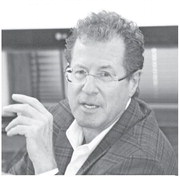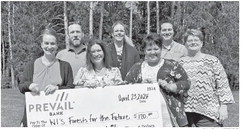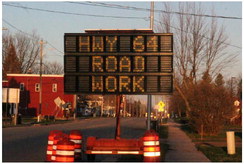Company seeking ‘critical’ minerals


A metallic mineral deposit near Perkinstown is once again drawing interest for a possible mine location.
Ilsley “Daniel” Colton, president and CEO of GreenLight Metals along with other members of company’s leadership team met with members of the county’s metallic mining committee on Tuesday. The goal of the meeting was to open lines of communication between the mineral exploration company and the county over the possibility of a mine on the site some time in the future. Any mine would still be at least five years out and subject to multiple layers of regulation and permitting by state and federal governments.
First identified in the 1970s, the socalled Bend Site is located in the town of Westboro just north of its border with the town of Grover with Yellow River Road dividing the location. GreenLight is exploring a site that measures one mile by one mile in size and entirely within the Chequamegon-Nicolet National Forest.
According to Colton, while the USDA Forest Service has surface ownership to See COUNTY on page 4 all of the area, there is an approximately 40-acre area where the Soo Line Railroad still retains mineral rights. The remainder of the mineral rights are held by the US Government.
Previous exploration at the site showed the presence of gold, copper and zinc as well high levels of the element tellurium. According to Colton, it is the presence of copper, zinc and especially tellurium that have generated interest at this time. All three of these metals have been identified by the federal government as being “critical minerals” because of their strategic importance in power generation and because the United States imports the majority of these metals from other countries rather than producing them domestically.
Copper is heavily used in electronics and the projection is that within the next 20 years more copper will need to be mined than in the previous 125 years to meet rising demands. Zinc is heavily used in offshore windmills to reduce corrosion and tellurium is an essential part of the construction of solar panels. Colton noted that the United States imports about 84% of the zinc used, Colton noted that gold deposits are also present and that while not considered a critical mineral, it also has a significant presence in technology devices and equipment.
Development of domestic production of these mineral resources is important because as was shown during the pandemic, supply chains break down and the governments of the areas where these are imported from include China and Russia which are not always friendly to American interests, Colton said.
At this stage, the company is looking to do additional drilling to get boring samples to determine the size and shape of any deposit. It is estimated there are about 4 million tons of resources in the deposit with 1.8% of it being copper.
Test drilling is nothing new for the site with various companies getting permits to explore drilling there over the years from the 1980s to about 2012. The previous company Aquila Resources had the goal of doing an underground mine at the site, but the economic situation changed and it was never developed.
What is different now, is that the federal government has given additional emphasis on the development of these critical minerals and has streamlined the federal permitting process putting it under the Department of Defense rather than the Department of Interior.
According to GreenLight Metals director Stephen Donohue explained, about three-fourths of the Bend deposit minerals are on federal land and a prospecting permit has been filed with the Bureau of Land Management. They anticipate the prospecting permit to be issued within the next year. Initial exploration is concentrating on the area where the Soo Line railroad retains mineral rights.
Donohue said he expects it to be another three to four drill campaigns before they have enough data to move forward into development of a potential mine. Drilling is done during a six to eight week window in the winter under frozen ground conditions. He explained that crews wait until there is about a foot of snow on the ground and that they then compact the snow creating essentially an ice road to the drilling site for the drilling rigs, this minimizes the impact on vegetation and the surface. The drilling process itself is very similar to how a residential well is drilled with a hole drilled and a casing placed before a 3-inch diameter core is drilled and removed to the depth they need for exploration.
Donohue said the company has a commitment to environmental stewardship. “We want to minimize our environmental footprint,” he said.
If a mine were to ever be developed at the site, GreenLight representatives said the plan would be for it to be a shaft mine with the minerals removed and loaded into trucks to be hauled to a processing facility elsewhere. They gave the example of a mine that was developed in Michigan with this technique and they an existing brownfield — former heavy industrial space that was no longer being used — and it was repurposed to serve as the processing facility.
Ron Zuleger from the town of Grover expressed concern about the impact on the roads and how they would be maintained with increased traffic when the exploration and eventual mining took place.
Company officials explained that these would be handled with contracts between the mining company and the county and towns regarding upgrades and ongoing maintenance of the impacted roads.
Colton said the track record of mining in the past two decades has proven anti-mining advocates wrong regarding to what he described as “Chicken Little” fears.
While GreenLight’s parent company is in Toronto, the board and decision making for the exploratory company is located in Wisconsin.
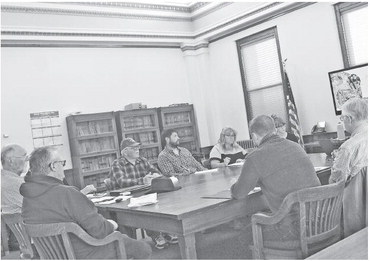
Stephen Donohue, a director with GreenLight Metals spoke about the steps being taken to minimize the environmentalimpact.
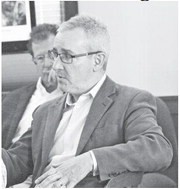
President/CEO of GreenLight Metals reviewed the reasons why the exploration company is looking at the mineral deposit with the goal of eventually developing a mine in the county.
